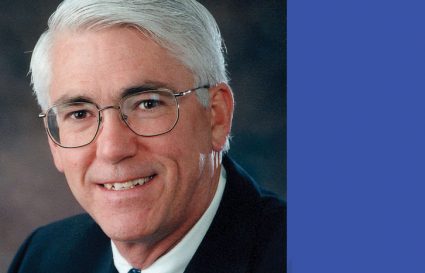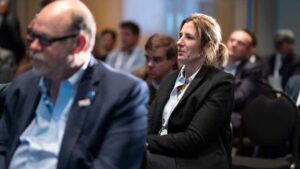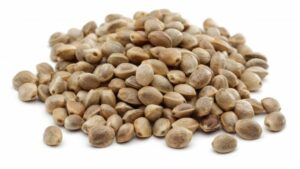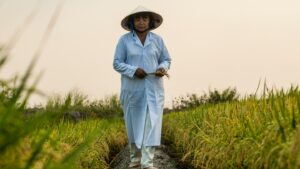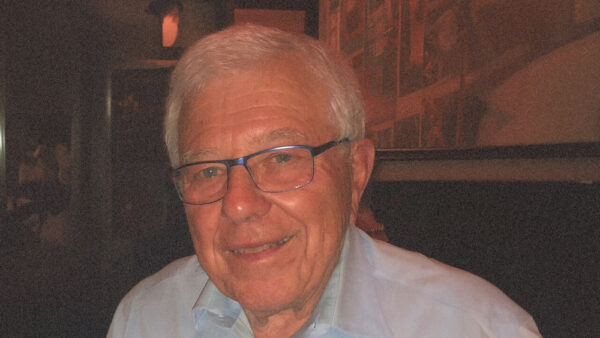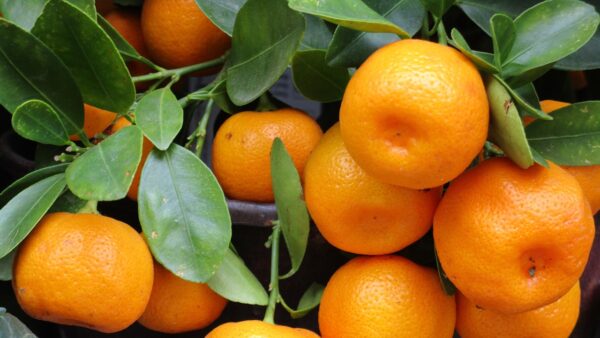In a Bangladeshi village, Loretta Byrnes hosts a group of female farmers to teach them about improved rice planting techniques, but what she learned from them might prove more valuable in her agricultural development work.
As a CARE field staff member she asked the women: “You are all so busy taking care of your homes and children, is this (planting rice) not just more work for you?” She listened, both surprised and bewildered as one woman explained that if they could work in the fields and contribute to the household income, it’s labor they don’t have to pay for … and as a result “our husbands are chasing us around the house more.”
With 12 years of personal experience in Bangladesh alone, Byrnes has worked on a number of seed-related projects for the Mennonite Central Committee, CARE, World Vision and International Development Enterprises. In Bangladesh, Byrnes worked with government researchers and seed companies to train less literate smallholder farmers about seed quality, varietal purity and seed production. She helped farmers access quality seed from the formal system, and also how to maintain varietal purity of preferred local varieties.
Knowing that time is short and resources limited, Byrnes asked: “But we trained your husbands about improved rice planting techniques, why can they not teach you?” The woman replied: “They are not patient with us, and we are afraid to ask questions. We like learning from the female trainers, which also gives us the opportunity to share and learn from one another.”
Women farmers are frequently credited as being the drivers behind efforts to improve and increase agricultural production in many regions of the world. Byrnes knowledge about agricultural development isn’t limited to Bangladesh. She’s worked all over Africa and served as an agriculture program officer for the Bill & Melinda Gates Foundation. Through the years, she’s learned a few lessons.
First, the woman. “The vast majority of women are married and that relationship is critical to their well-being,” Byrnes says. “To really empower women, you have to understand and respect their household, community relationships and culture. You cannot empower a woman by taking power from her husband and partner.”
Next, the farmer. “To empower women as farmers, you have to understand farmers in general — their particular crop and variety preference, cropping patterns, seasonality, land types, market access, etc. One then must understand the differences between male and female priorities, decision-making, access to information and markets.”
Different Dynamics
For example, Byrnes says in West Africa men are more interested in high-yielding cassava to sell at wholesale markets, while women prefer varieties better suited to household usage. Women are very aware of the different maturity rates, yields and processing traits of a given variety, and several varieties are often cultivated within a single field so they can produce food and generate cash sales throughout the year. Male farmers, she says, may focus on maize because of market opportunities, especially if the government subsidizes planting seed and/or promises to buy the harvested grain crop at a fixed price.
Small farmers need options and information. In some cases male and female farmers have different priorities. She encourages researchers to be cognizant of the factors that affect variety adoption among smallholder farmers.
“You cannot promote one or two maize or soybean varieties for millions of acres,” Byrnes notes. And unfortunately, the public and private formal systems, for breeder and foundation seed are not at all functional, as we would expect in the West, she adds.
Byrnes’ long-held passion has been to find ways to improve people’s lives — by the clientele’s self-determined measures, some of which will not be found on the ledger’s bottom line.


